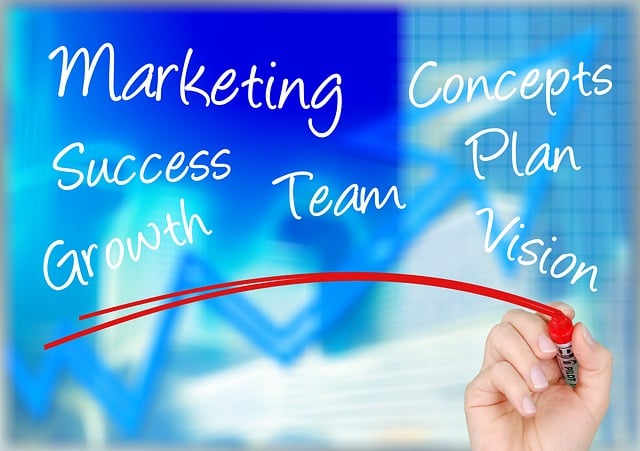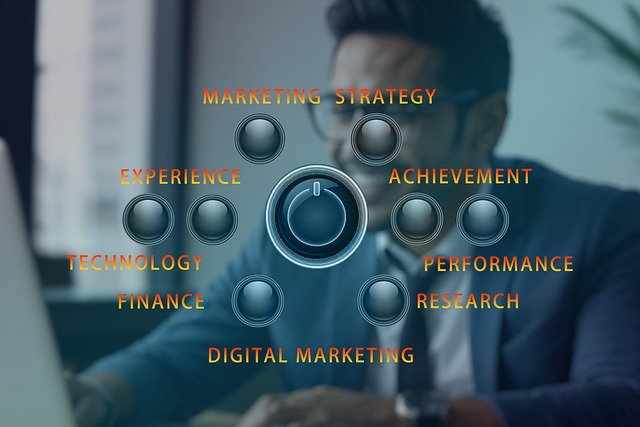In a competitive auto industry, AI systems are crucial for achieving marketing success. By leveraging machine learning algorithms, auto repair shops can personalize interactions, analyze vast data, and identify trends to cater to specific vehicle models and owner preferences. This enhances customer satisfaction, fosters loyalty, and positions businesses as innovative. Implementing AI involves four key steps: identifying benefits, investing in quality data, selecting appropriate tools, and educating the team. Measuring success through KPIs like customer engagement, lead conversion rates, and retention is essential. Future trends include deeper machine learning for predictive analytics and NLP chatbots for instant support, promising to revolutionize customer communications and set new benchmarks for marketing success in the auto industry.
In today’s digital era, AI implementation strategies are revolutionizing auto businesses. This article guides you through understanding the pivotal role of AI in auto repair marketing, offering a step-by-step guide to integrating AI systems for enhanced efficiency and customer satisfaction. We’ll explore how these technologies drive marketing success in auto repair, while also delving into measuring success and future trends shaping the industry.
- Understanding AI's Role in Auto Repair Marketing
- Implementing AI Systems: Step-by-Step Guide
- Measuring Success and Future Trends
Understanding AI's Role in Auto Repair Marketing

In the competitive landscape of auto businesses, understanding the role of Artificial Intelligence (AI) systems is crucial for achieving marketing success. AI offers a transformative opportunity to personalize and optimize customer interactions, from targeted advertising to predictive maintenance reminders. By leveraging machine learning algorithms, auto repair shops can analyze vast amounts of data to identify trends and tailor services to specific vehicle models or owner preferences. This level of customization enhances customer satisfaction and loyalty, positioning the business as innovative and forward-thinking.
For instance, AI chatbots can provide immediate assistance to customers, answering common questions and scheduling appointments. Moreover, AI systems can analyze repair histories and driving patterns to predict potential issues before they become costly problems. Such proactive marketing strategies not only save time and resources but also foster a strong relationship between the auto repair shop and its clients, ensuring long-term business growth and competitiveness in the market.
Implementing AI Systems: Step-by-Step Guide

Implementing AI Systems: A Step-by-Step Guide for Auto Businesses
The first step in harnessing the power of AI systems for marketing success in auto repair is to identify specific areas where AI can provide significant benefits. This could include automating administrative tasks like scheduling appointments, analyzing customer data to predict maintenance needs, or improving marketing strategies through personalized recommendations and targeted campaigns. Once these areas are defined, auto businesses should invest in high-quality data collection and preparation. Clean, structured data is crucial for training effective AI models.
Next, select appropriate AI tools and technologies tailored to the identified use cases. Machine learning algorithms, natural language processing (NLP), and predictive analytics are just a few examples of AI capabilities that can transform auto repair marketing. Integrate these systems into existing workflows seamlessly. Regular testing and iteration will ensure the AI solutions remain accurate and efficient. Finally, educate your team on how to interact with and leverage the new AI systems, fostering a culture of data-driven decision-making for ongoing marketing success in the auto repair industry.
Measuring Success and Future Trends

Measuring the success of AI implementation in auto businesses, particularly in marketing strategies for auto repair shops, is paramount to understanding its true value. Key performance indicators (KPIs) should include metrics like increased customer engagement, improved lead conversion rates, and enhanced customer retention. By analyzing these factors, businesses can gauge the effectiveness of their AI systems in streamlining processes, personalizing interactions, and ultimately driving sales.
Looking ahead, future trends in AI for auto repair marketing suggest a deeper integration of machine learning algorithms for predictive analytics, enabling shops to anticipate service needs based on vehicle data. Additionally, natural language processing (NLP) is poised to improve customer communications, with chatbots providing instant support and personalized recommendations. These advancements promise to revolutionize the way auto businesses interact with their customers, setting new benchmarks for marketing success in the industry.
The integration of AI systems offers a compelling opportunity for auto businesses to transform their operations. By understanding AI’s role in marketing and implementing a structured strategy, as outlined in this guide, auto repair shops can enhance customer engagement, streamline processes, and gain valuable insights. Measuring success involves tracking key performance indicators (KPIs) and adapting to evolving trends. As AI continues to advance, embracing these technologies will be essential for achieving marketing excellence and staying competitive in the automotive industry.
